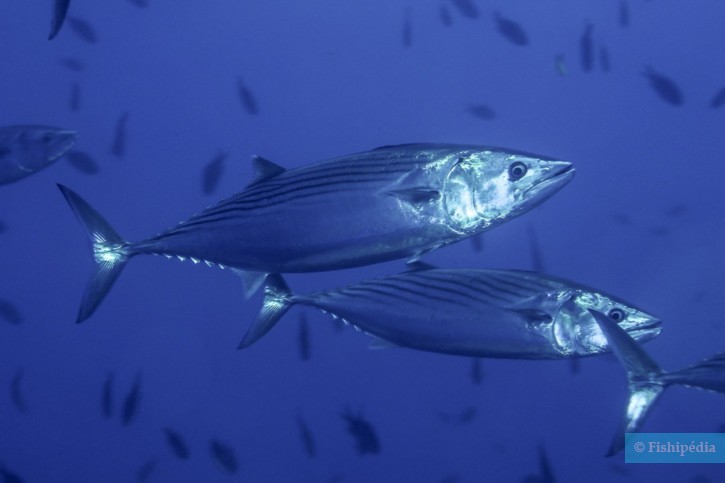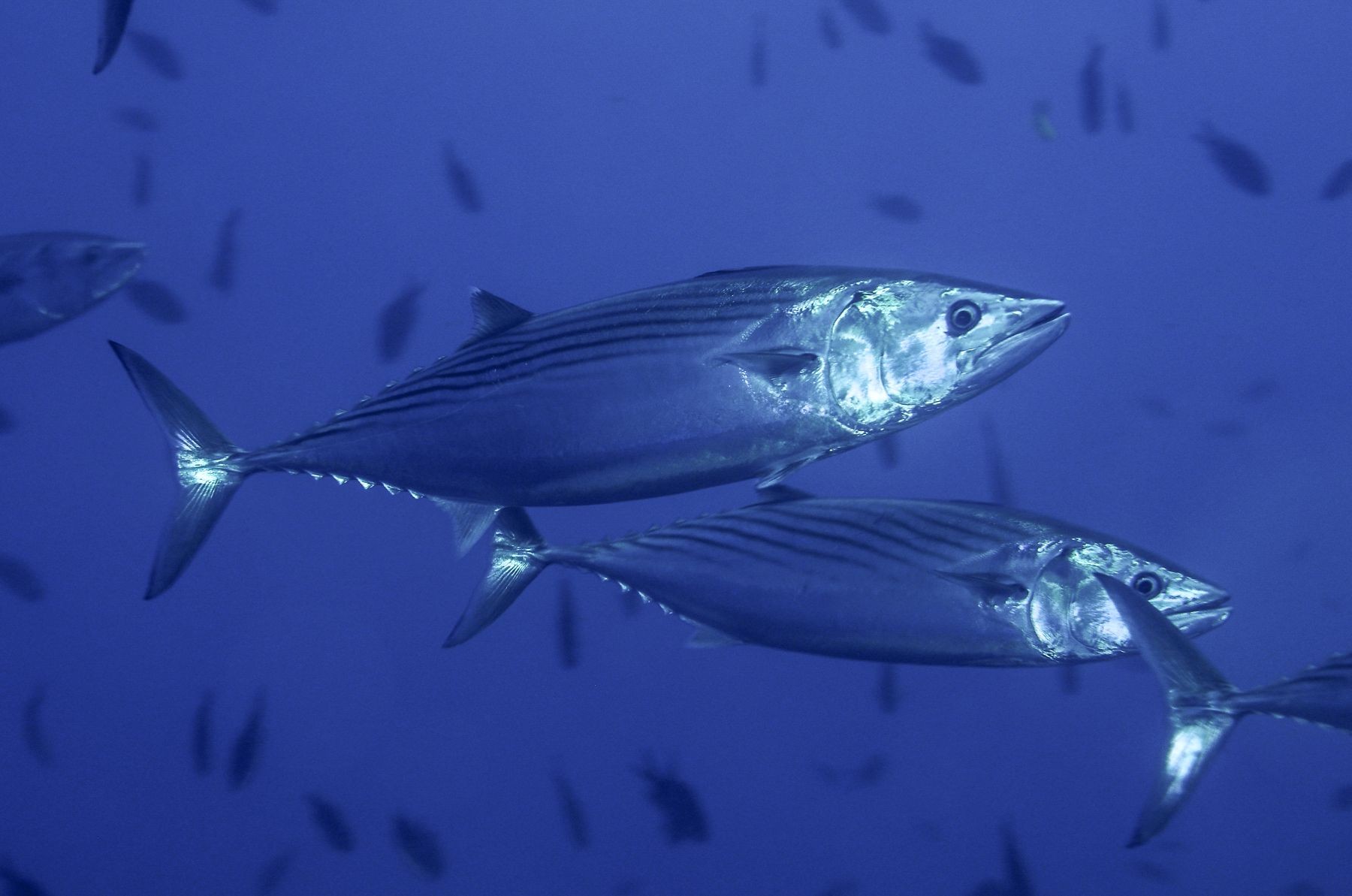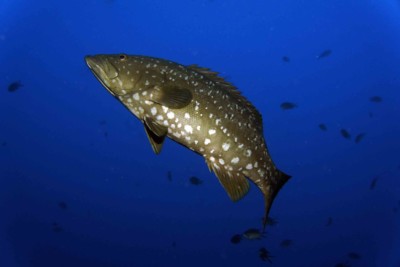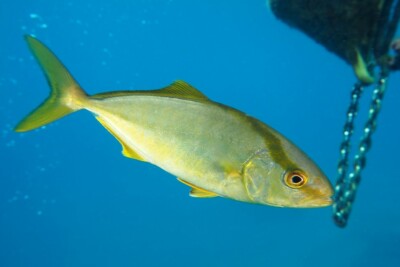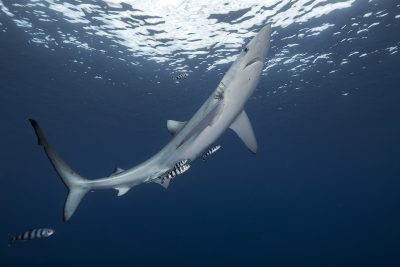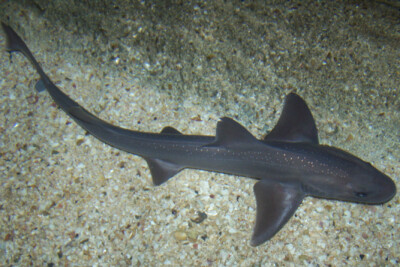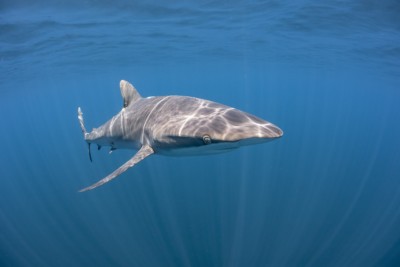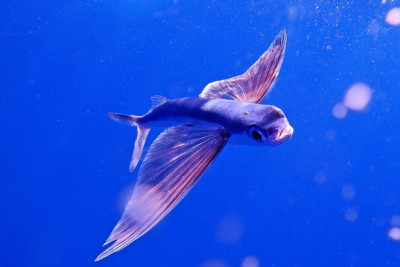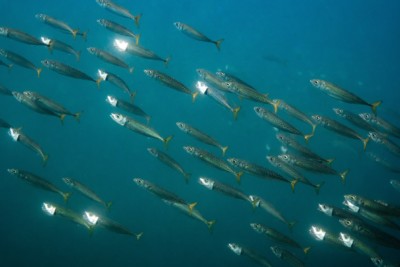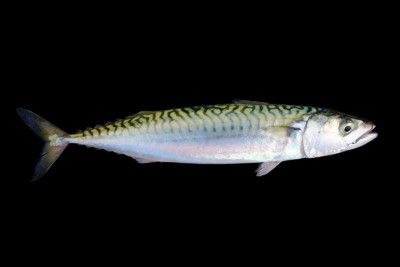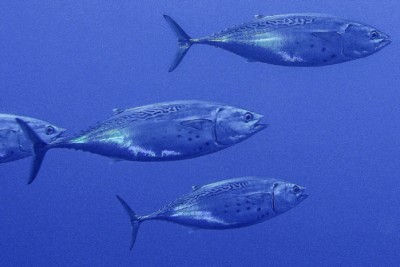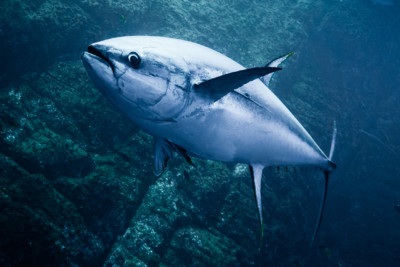Introduction
Sarda sarda, commonly known as the Atlantic bonito, is a pelagic marine fish found throughout the Atlantic Ocean, Black Sea, and Mediterranean Sea.
This species, closely related to tuna, is classified as least concern by the IUCN. However, due to its high commercial value, it is the target of significant industrial fishing. The wide distribution of the species currently allows for its sustainability.
Who is it?
Morphology
-
Average size50 cm
-
Maximum size91.4 cm
-
Longevity5 year
-
Patterndiagonal stripes
-
Average size50 cm
-
Maximum size91.4 cm
-
Longevity5 year
-
Patterndiagonal stripes
How to recognize This fish ?
This species has a streamlined silvery body. The back is striped with diagonal dark blue to black lines. The hydrodynamic body is designed for fast swimming.
The mouth is large and powerful, with high gill slits on the head. The dorsal fins are close together and positioned far back, slightly in front of the anal fin. The pelvic fins are small and start just after the gills. The caudal fin is forked.
Sexual dimorphism
There is no apparent dimorphism in this species.
Behaviour & Life cycle
-
dietcarnivorous
-
Sociabilityliving in shoals
-
territorialNo
-
Way of livingdiurnal
The Atlantic bonito is a fish that lives in schools of varying sizes and inhabits the epipelagic zone. It is not uncommon to see this species near the coast.
This lively pelagic predator is designed for hunting fish in open water.
Reproduction
-
Reproductionovipare qui pond en eau libre
The Atlantic bonito is a gonochoristic, oviparous fish that spawns in open water during the seasonal warming of the water, usually between June and September. Bonito schools migrate from the Atlantic to the Mediterranean Sea to reproduce.
Sexual maturity is reached at a size of around 38 cm. The female will lay between 400,000 and 500,000 eggs in open water. The males will then release their sperm to fertilize the eggs, which are carried into deeper waters by the currents.
Harmless species
This species does not pose a particular danger to humans if encountered in its natural environment.
Origin and distribution

Geographic distribution & Conservation
The Atlantic bonito has a wide geographical presence throughout the Atlantic Ocean, as well as the Mediterranean Sea and Black Sea.
Conservation status of populations (IUCN)
What is its habitat?
Natural environment characteristics
-
Temperature12 - 27 °C
-
Depth1 - 200 m
-
EnvironmentActive pelagic
Biotope presentation
Atlantic bonito are most commonly found at depths less than 200 m in open water. However, it is not impossible to find this fish at other depths.
Species of the same biotope
To go further
Sources & Contributions
Participation & Validation
The Fishipedia team and specialist contributors are committed to providing high-quality content. However, although the information comes from scientific sources or testimonials from specialists, the cards may contain inaccuracies.

Adrien Falzon

Benoit Chartrer
Translation
Translation done with the valuable contribution of our translators, who make this information available to a wider audience. We sincerely thank them for their commitment.
Bibliographic references
- - GBIF
- - Seasonal distribution and spawning of small tunas (Auxis rochei and Sarda sarda) in the Northwestern Mediterranean - CSIC - 2001.
- - Feeding habits of the Atlantic bonito, Sarda sarda (Bloch, 1793) in the southern Tyrrhenian sea - D.Campo - E.Mostarda - M.P.Scarabello - F.Andaloro - Elsevier Ltd - 2006.
Scientific partners
Tags
#Scombridae
#Sarda
#plein eau
#Gulf of Mexico
#Caribbean Sea
#Mediterranean Sea
#Black Sea
#Atlantic Ocean: North Coast of Brazil
#Océan Atlantique Est Afrique - Angulhas
#Océan Atlantique Est Afrique - Bengala
#Océan Atlantique Est Afrique - Golfe de guinée
#Temperate Eastern Atlantic Ocean
#Océan Atlantique Est Afrique - Transition & Cap Vert
#Eastern Cold Atlantic Ocean
#Gough Island
#Saint Helena
#Cold temperate Northwest Atlantic Ocean
#Northwest warm temperate Atlantic Ocean
#Southwest warm temperate Atlantic Ocean
#Eastern tropical Atlantic Ocean
#Southwest Tropical Atlantic Ocean
#Corsica
#Canary Islands
#Sardinia
#Sicily
Species of the same family
Species of the same biotope
